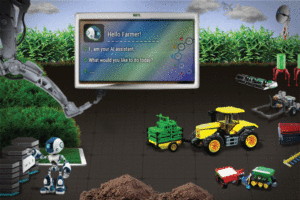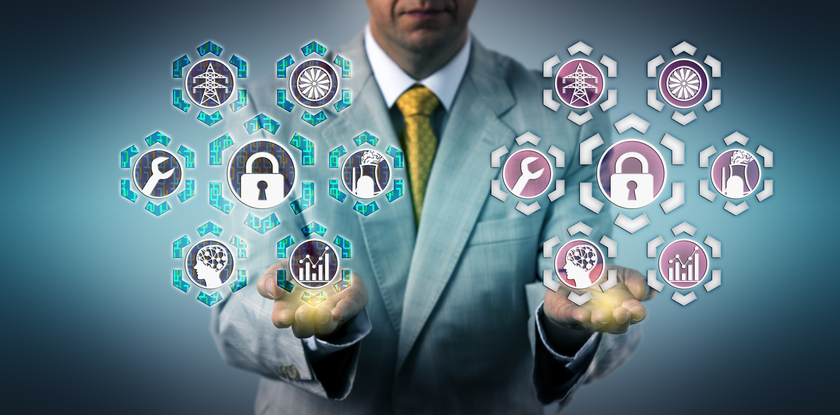Agriculture 5.0 heralds a revolutionary phase, integrating advanced technologies to enhance efficiency and sustainability tailored to individual field and livestock needs. The integration of artificial intelligence (AI), robotics, extended reality, and 6G technologies represents a significant leap, enabling real-time monitoring and automation in farming practices, promising a future of increased productivity and reduced environmental impact.
In an article published in IT Professional, researchers present a comprehensive description of Agriculture 5.0, underscoring the potential and hurdles in reshaping the future of farming. This article aims to show the transition of Agriculture 4.0 to the new era of Agriculture 5.0, the leading technologies: robotics and artificial intelligence, and how these will be integrated into Agriculture 5.0.
The researchers present additional technologies, including extended reality (XR) and natural language processing (NLP), that will tailor digital technologies and provide specific information. Finally, the behavioral change of farmers and farm advisors and their willingness to adopt such technologies is also discussed.
What is Agriculture 5.0?
The researchers spend the first part of the article explaining how we got to where we are, outlining the hallmarks of Agriculture 1.0 through Agriculture 4.0. Technologies have been transformative for agriculture since the beginning, all the way back to plow and animal power technology. Agriculture has seen steady technological advances since the Green Revolution of the 1950s.
According to the researchers, Agriculture 5.0 signifies future developments in farming, characterized by the customized application of digital solutions to meet the diverse needs of individual fields, animals, and farmers. This paradigm goes beyond traditional precision agriculture by emphasizing a highly tailored and adaptable approach, using advanced technologies such as AI, data analytics, and automation to deliver personalized solutions. At its core, Agriculture 5.0 aims to empower farmers with precision tools tailored to the specific needs of their farming sectors and design transformative ways of change that will create behavioral shifts and increase farmer adoption of these technologies.
Building on the definition of precision, Agriculture 5.0 can be defined as the environmentally, economically, and socially sustainable agricultural production system that uses advanced technologies with “everything, everywhere, and every time.” Specifically, Agriculture 5.0 will enhance efficiency, productivity, and resilience from farm to fork by utilizing more sustainable and resilient agricultural practices.

Overview of the Agriculture 5.0 digital agricultural field that has NLP to interact with the farmer, IoT devices to sense soil moisture, robotic vehicles (ground and aerial) to monitor and conduct farm operations, and antennas to receive satellite images.
Technologies for Agriculture 5.0
Central to Agriculture 5.0 is precision farming, optimizing input usage through data-driven decision-making, and enhancing crop productivity, profitability, and quality while minimizing environmental impact and labor. Precision farming uses agricultural knowledge systems and integrates data-driven digital systems to improve operations.
The researchers outline the four technological pillars that precision farming, and Agriculture 5.0, will rely on:
- Smart sensors: Strategically placed to collect essential field data, covering soil moisture, temperature, nutrient levels, and pest incidence.
- Information and communications technology: Ensures seamless data transmission to servers, utilizing wireless networks, the IoT, 5G, and blockchain.
- AI and machine learning: Extracting insights from data, employing techniques like big data analytics, deep learning, computer vision, NLP, and reinforcement learning.
- Robotics and automation: Used for precise field interventions, including seeding, weeding, fertilizing, and harvesting.
The researchers note that precision farming for Agriculture 5.0 is evolving rapidly, incorporating innovations to meet emerging challenges. The article goes on to discuss several technologies as they relate to Agriculture 5.0, including Robotics, XR, Blockchain, 6G, AI, Big Data, and NLP.
A Behavior Shift is Needed
Transitions to digital agricultural technologies are long-term, complex, and multidimensional processes that involve specific uncertainties and tradeoffs. According to the authors, upgrading farmers to “smart farmers” depends on their adoption levels and willingness to accept the novel digital practices. Despite significant technological developments gaining momentum, the steps in farmer technology adoption are slower, and this gap will likely be more pronounced in the future. Current impediments include the sociodemographic characteristics of farmers (older age and lower education), costs of new technologies (initial investment, plus training), and lack of control or transparency of technologies (privacy protection and farmer rights).
However, these challenges can be overcome through targeted training and support, government policies that promote technology adoption, and industry initiatives that ensure the ethical and responsible use of these technologies. The researchers suggest participatory and collaborative approaches in the adoption of agricultural innovations. Extension and advisory services may involve training courses, field visits, demonstrations, and technical support. These will play a significant role in building farmers’ knowledge, skills, and confidence and helping them overcome barriers to adoption.
Future Directions
The future of Agriculture 5.0 lies in its ability to overcome existing challenges, ensuring sustainable and efficient farming practices. According to the article, policies and guidelines that ensure data privacy, ethical technology usage, inclusiveness, and fair market competition are crucial for creating a balanced ecosystem where technology benefits all stakeholders.
As the researchers note, Agriculture 5.0 is poised to be a balanced mixture of technology and sustainability, leading to more efficient, productive, and environmentally friendly agriculture. The direction it takes will significantly influence global food security and environmental health, making it an emerging area of focus in the coming years.
Interested in learning more about the Internet of Things? IEEE offers continuing education with the Artificial Intelligence and Ethics in Design and AI Standards: Roadmap for Ethical and Responsible Digital Environments course programs to smartly implement digital tools into your organization.
Interested in acquiring full-text access to this collection for your entire organization? Request a free demo and trial subscription for your organization.





